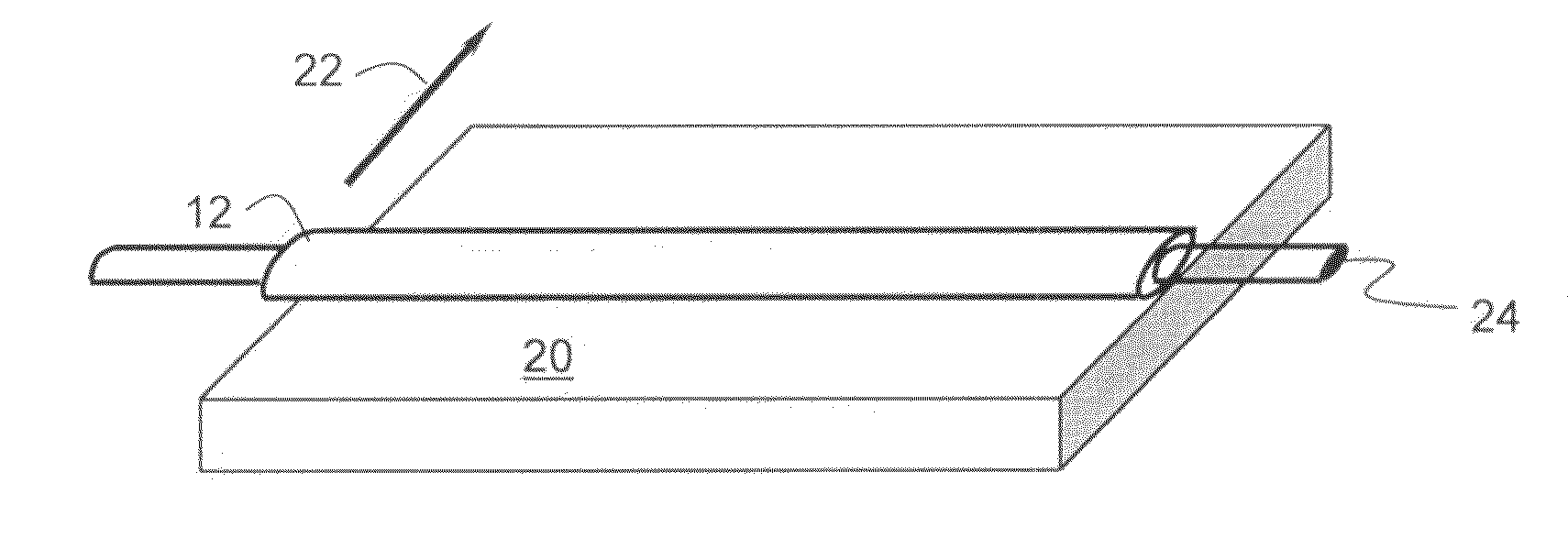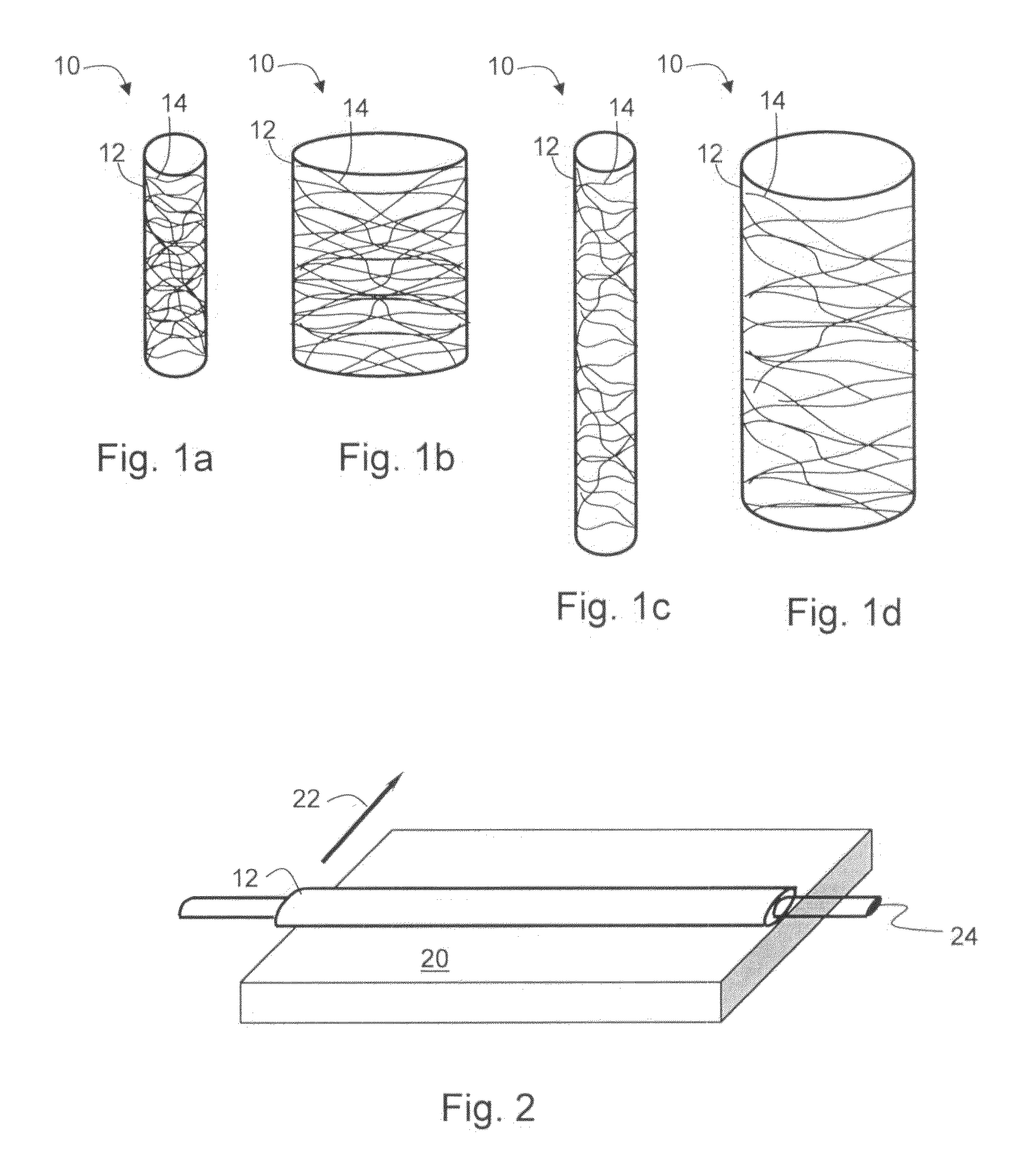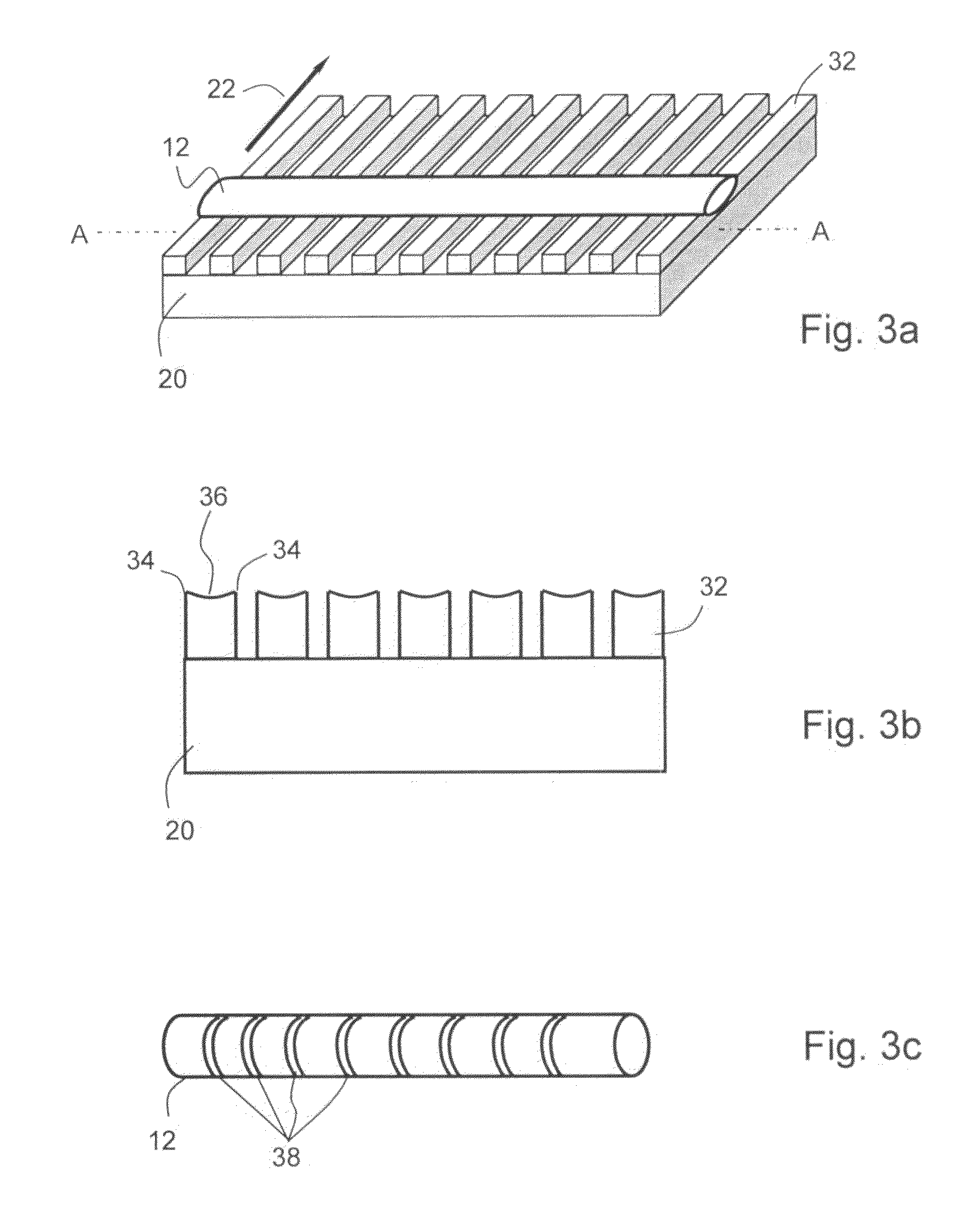Plastically deformable compositions and uses thereof
- Summary
- Abstract
- Description
- Claims
- Application Information
AI Technical Summary
Benefits of technology
Problems solved by technology
Method used
Image
Examples
example 1
Mechanical Tests for Various Compositions
[0226]Five types of composition-of-matters produced in accordance with various exemplary embodiments of the present invention were subjected to mechanical tests. Each composition-of-matters was in the form of a tubular structure composed of a plurality of plastically deformable fibers.
[0227]The liquefied polymer mixtures for the production of the tubular structures included PCL:EVA:PEC in a 9:0.5:0.5 weight ratio (sample No. 1), PCL:EVA:PEC in a 9:0.5:1 weight ratio (sample No. 2), PCL:EVA:PEC in a 8:1:1 weight ratio (sample No. 3), PCL:EVA:PEC in a 8.5:1:0.5 weight ratio (sample No. 4), and PCL:EVA:PEC in a 8.5:0.5:1 weight ratio (sample No. 5). The liquefied polymers were dissolved separately in chloroform at normal conditions during 24 hours by means of a magnetic stirrer and mixed. The solution was filtered and its conductivity adjusted up to about I μS. The solution concentration was 9%, and the viscosity was 560 cP.
[0228]All tubular str...
example 2
PCL-EVA-PBMA, No Thermal Treatment
[0231]Ethylene-vinyl acetate copolymer (EVA), Poly(butyl methacrylate) (PBMA) and polycaprolactone (PCL), in a 0.5:0.5:9 weight ratio, were dissolved separately in chloroform at normal conditions during 24 hours by means of a magnetic stirrer and mixed. The solution was filtered and its conductivity adjusted up to about I μS. The solution concentration was 9%, and the viscosity was 560 cP.
[0232]The mixture was used as a liquid in an electrospinning process, in which polymer fibers were precipitated on a mandrel. The dimensions of the mandrel were about 2 mm in diameter and about 300 mm in length. The obtained tubular structure was characterized by porosity of about 80% and was further crimped by means of an MSI Stent Crimping Device. After crimping the product porosity was about 30%. No thermal treatment was applied.
[0233]The produced tubular structure was subjected to mechanical tests to determine the extension load at break, and the relaxation rat...
example 3
PCL-EVA, No Thermal Treatment
[0236]Two tubular structures were manufactured from a mixture of polycaprolactone (PCL) and poly(ethylene-vinyl acetate) (EVA). For a first tubular structure the weight ratio of PCL:EVA was 9:1 and for a second tubular structure the PCL:EVA weight ratio was 9.5:0.5. The mixing and electrospinning were performed as described in Example 2 above.
[0237]Both tubular structures were characterized by porosity of about 80%. The tubular structures were further crimped as described in Example 2. After crimping the porosity was about 30% for both structures. For the first structure (9:1 weight ratio) the extension at break was about 950%, the load at break was about 2.1 N, and the relaxation rate was about 17%. For the second structure (9.5:0.5 weight ratio) the extension at break was about 680%, the load at break was about 2.7 N, and the relaxation rate was about 14%. In response to a localized inward radial force of about 0.1 Newtons / cm, the tubular structures ma...
PUM
 Login to View More
Login to View More Abstract
Description
Claims
Application Information
 Login to View More
Login to View More - R&D
- Intellectual Property
- Life Sciences
- Materials
- Tech Scout
- Unparalleled Data Quality
- Higher Quality Content
- 60% Fewer Hallucinations
Browse by: Latest US Patents, China's latest patents, Technical Efficacy Thesaurus, Application Domain, Technology Topic, Popular Technical Reports.
© 2025 PatSnap. All rights reserved.Legal|Privacy policy|Modern Slavery Act Transparency Statement|Sitemap|About US| Contact US: help@patsnap.com



